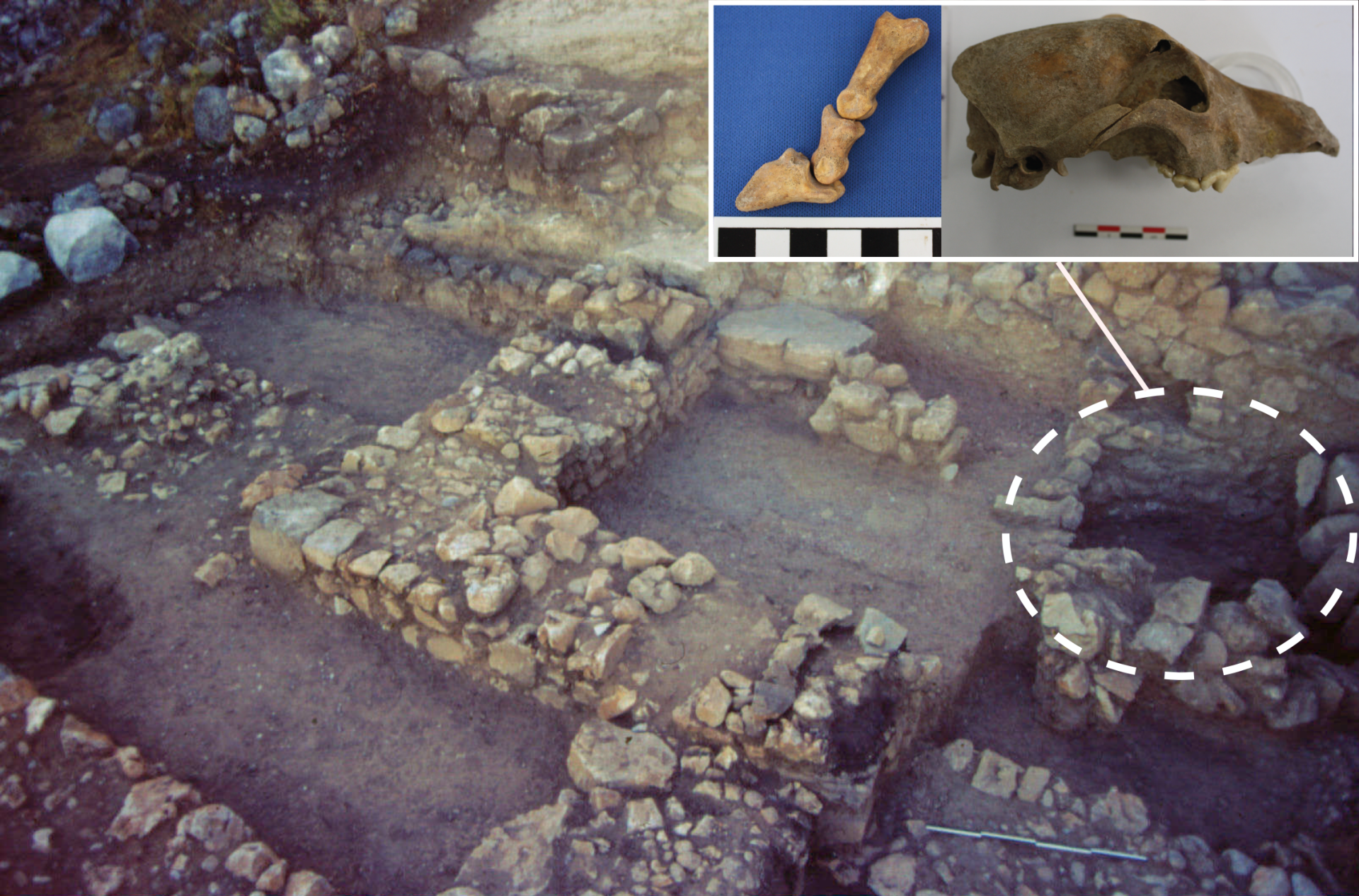Excavations of a large Bronze Age debris deposit in Mycenae, Greece has provided important data for understanding the history of animal resources.
Animals were an important source of subsistence and symbolism at the Late Bronze Age site of Mycenae in Greece, as evidenced by their depictions in art and architecture, but more research is needed on the animals that actually lived there.
In a study published in the journal PLOS ONE, researchers performed a detailed analysis of a large deposit of animal remains inside a well within Petsas House, a household in Mycenae that also included a ceramics workshop.
Excavations into the well recovered ceramics, metal, stone, and other materials alongside abundant animal remains, the most common of which were remains from pigs, sheep and goats, cattle, and dogs. Based on the study of the condition of these animal remains, including evidence that many of these animals were used as food, in association with the other finds, especially pottery, the researchers reconstruct that this well was used to collect debris post destruction.
The contents of the well vary across the vertical layers within it, indicating variation in the source formation processes and in the availability of animal resources, both locally sourced and externally provided. These changes might also reflect hardships in the wake of a natural disaster, as the debris within the well appears to have come from cleanup efforts after a destructive earthquake.
The dog remains were more intact than those of the farm animals, and were deposited in the well at a different time. The authors believe this to be tentative evidence that dogs may have been treated differently in death than other animals.
This study demonstrates how detailed analysis of animal remains in well-preserved assemblages can provide insights into social dynamics of ancient settlements. Further investigation into this site will potentially elucidate patterns of food provisioning, trading, and responses to natural disasters at this important archaeological locality.
The authors add: “This study presents new insights about ancient animals recovered from the renowned archaeological site of Mycenae in Greece—a major political center in the Late Bronze Age, famous for references in Homer’s Iliad. Research at Petsas House, a domestic building in Mycenae’s settlement used in large part as a ceramics workshop, revealed how the remains of meaty meals and pet dogs were cleaned and disposed of in a house well following a major destructive earthquake. Study of the archaeologically recovered bones, teeth, and shells from the well yielded a more nuanced picture of the diverse and resilient dietary strategies of residents than previously available at Mycenae.”
https://doi.org/10.1371/journal.pone.0280517
Header Image Credit : Meier et al – PLOS ONE





